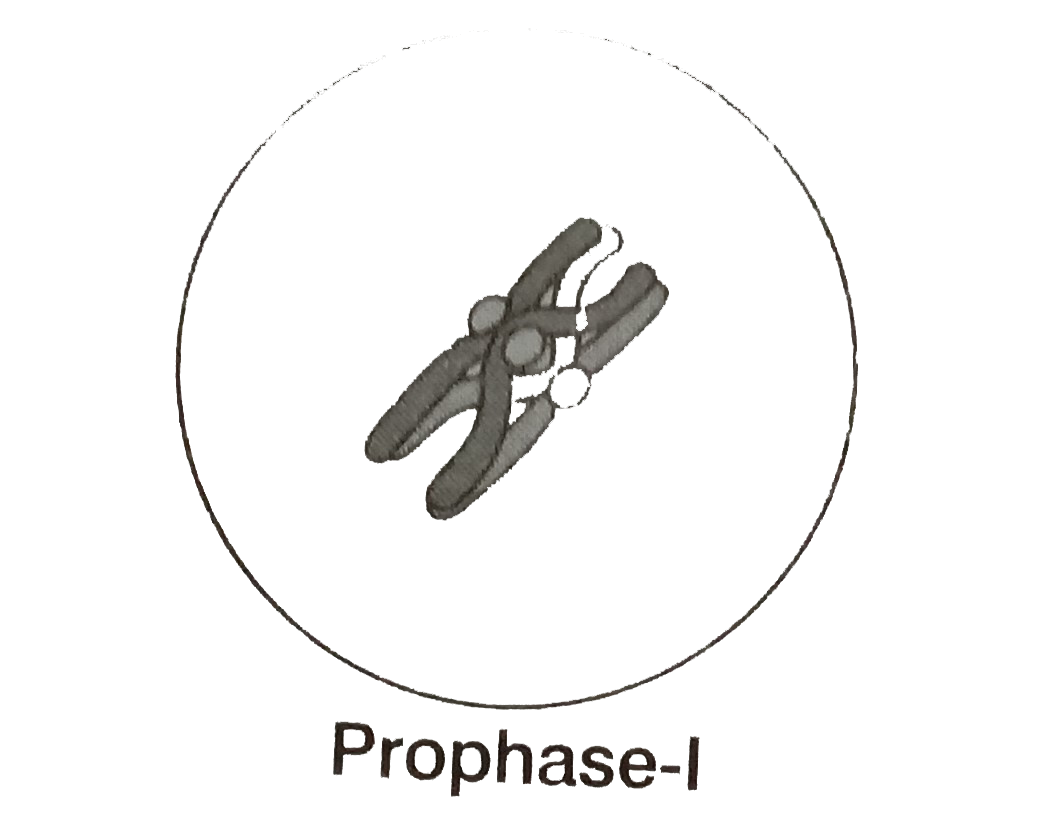If n=16 in plant cell, then how many bivalents in metaphase-I of meiosis are possible ?
(a) 32 bivalents
(b) 16 tetravalents
(c) 16 bivalents
(d) 32 bivalents
32 bivalents
16 tetravalents
16 bivalents
32 bivalents
The correct Answer is:C
To determine the number of bivalents in metaphase-I of meiosis when n=16 in a plant cell, we can follow these steps:
1. Understand the term 'n':
- The term 'n' refers to the haploid number of chromosomes. In this case, n = 16 means that there are 16 chromosomes in the haploid set.
2. Determine the diploid number (2n):
- The diploid number (2n) is twice the haploid number. Therefore, if n = 16, then:
2n=2×16=32
- This means the plant cell has 32 chromosomes in total.
3. Understand the formation of bivalents:
- During meiosis, homologous chromosomes pair up to form bivalents. Each bivalent consists of two homologous chromosomes.
4. Calculate the number of bivalents:
- Since there are 32 chromosomes in total (2n = 32), and they pair up to form bivalents, the number of bivalents formed is:
Number of bivalents=Total chromosomes2=322=16
5. Conclusion:
- Therefore, in metaphase-I of meiosis, there will be 16 bivalents formed.
Final Answer:
(c) 16 bivalents
- The term 'n' refers to the haploid number of chromosomes. In this case, n = 16 means that there are 16 chromosomes in the haploid set.
- The diploid number (2n) is twice the haploid number. Therefore, if n = 16, then:
2n=2×16=32
- This means the plant cell has 32 chromosomes in total.
- During meiosis, homologous chromosomes pair up to form bivalents. Each bivalent consists of two homologous chromosomes.
- Since there are 32 chromosomes in total (2n = 32), and they pair up to form bivalents, the number of bivalents formed is:
Number of bivalents=Total chromosomes2=322=16
- Therefore, in metaphase-I of meiosis, there will be 16 bivalents formed.
(c) 16 bivalents
Topper's Solved these Questions
- BOOK - CENGAGE BIOLOGY ENGLISHCHAPTER - CELL CYCLE AND CELL DIVISIONEXERCISE - Assertion-Reasoning Questions4videos
CELL CYCLE AND CELL DIVISION
- BOOK - CENGAGE BIOLOGY ENGLISHCHAPTER - CELL CYCLE AND CELL DIVISIONEXERCISE - ARCHIVES (Chose the corrct option):21videos
CELL CYCLE AND CELL DIVISION
- BOOK - CENGAGE BIOLOGY ENGLISHCHAPTER - BREATHING AND EXCHANGE OF GASES EXERCISE - Archives15videos
BREATHING AND EXCHANGE OF GASES
- BOOK - CENGAGE BIOLOGY ENGLISHCHAPTER - CELL: STRUCTURE AND FUNCTIONSEXERCISE - ARCHIVES50videos
CELL: STRUCTURE AND FUNCTIONS
Similar Questions
Knowledge Check
- Question 1 - Select One
A bivalent of meiosis i consists of
Atwo chromatids and one centromereBtwo chromatids and two centromeresCfour chromatids and two centromeresDfour chromatids and four centromeres.
In female cockroach, how many ovarian tubules or ovarioles are present ?
(a) 3
(b) 6
(c) 8
(d) 16View SolutionHow many chain isomers are possible with the formula C7H16?
View SolutionHow many isomers are possible C7H16 ?
View SolutionThe diagram shows a bivalent at prophase -I of meiosis. Which of the four chromatids can cross over ?
 View Solution
View SolutionThe number of bivalents in Prophase I of meiosis are 10. How many chromosomes will be in Anaphase II of meiosis at each pole?
View SolutionA bivalent metal has an equivalent mass of 32. The molecular mass of the metal nitrate is
View SolutionTo produce 16 pollen how many microspore mother cells are required?
View Solution

